Vaping has rapidly moved from public spaces into more private areas, making bathrooms a new hotspot for concealed use. This shift has created a significant challenge for schools, offices, and public venues trying to maintain safe environments.
The rise in vaping has made vape detection for bathrooms a top concern, prompting urgent questions about how to effectively monitor and prevent it. Institutions face risks to health, safety, and compliance if the problem goes unchecked.
This guide offers a complete overview of vape detection for bathrooms in 2025. You will find the latest trends, explore detection technologies, learn practical steps for implementation, understand legal requirements, and discover future innovations. Stay informed, protect your spaces, and act with confidence.
The Rising Challenge of Vaping in Bathrooms
The issue of vaping in private spaces is rapidly becoming a priority for schools, businesses, and public venues. Vaping in bathrooms is particularly challenging to address, as these spaces offer privacy, minimal supervision, and a sense of secrecy for users. The growth in vaping prevalence has made vape detection for bathrooms an urgent concern for facility managers and policymakers.
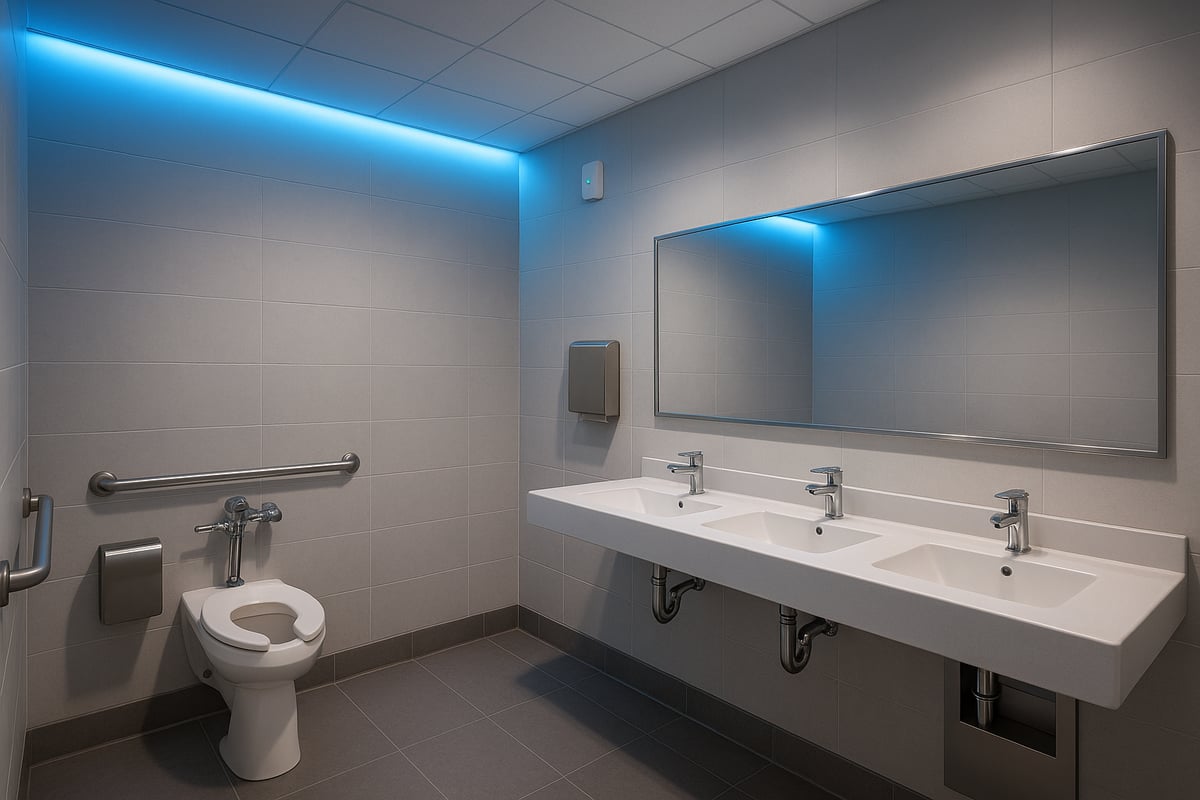
Prevalence and Trends
Recent data highlights a dramatic increase in vaping, especially among young people in the UK and worldwide. In fact, the UK is expected to see vaping rates overtake smoking by 2025, signalling a significant shift in nicotine consumption patterns. For more on this trend, see UK vaping rates to surpass smoking in 2025.
Bathrooms have become prime locations for vaping due to their inherent privacy, limited surveillance, and easy accessibility. In schools, students often choose bathrooms to avoid detection, while employees in offices may use these areas to circumvent workplace policies.
The health and safety risks of vaping in enclosed spaces are considerable. Vapour particles can linger in the air, affecting those with respiratory sensitivities and compromising overall air quality. There have been reported cases of fire alarms being triggered by vapour, leading to unnecessary evacuations and disruption.
Real-world incidents further illustrate the problem. Several UK schools have reported a sharp rise in vaping-related disciplinary actions, with some institutions seeing a doubling of incidents in a single academic year. In commercial settings, facility managers note increased cleaning requirements and complaints about air quality following vaping episodes.
Impact on Institutions and Individuals
The consequences of unchecked vaping in bathrooms extend far beyond inconvenience. For educational institutions, vape detection for bathrooms is critical to upholding safeguarding duties and promoting a healthy environment. Policy breaches can result in disciplinary action and reputational damage.
Businesses face similar challenges, with vaping contributing to increased maintenance costs and potential legal liabilities. Facility managers must address the impact on air quality, which can affect both staff wellbeing and compliance with health regulations.
Educators and employers consistently express concern over the normalisation of vaping in shared spaces. Health officials warn that exposure to secondhand aerosol, even in small amounts, may pose long-term health risks, particularly for vulnerable individuals.
Policy breaches often have serious repercussions. Examples include students facing suspension, staff receiving formal warnings, and organisations being scrutinised for inadequate response measures. The adoption of vape detection for bathrooms is now viewed as an essential step to safeguard all users, minimise costs, and maintain public trust.
How Vape Detection Technology Works
Understanding vape detection for bathrooms requires a closer look at the advanced technologies behind these systems. Modern solutions use a blend of sensor types and intelligent analytics to ensure accurate, real-time monitoring in private spaces.
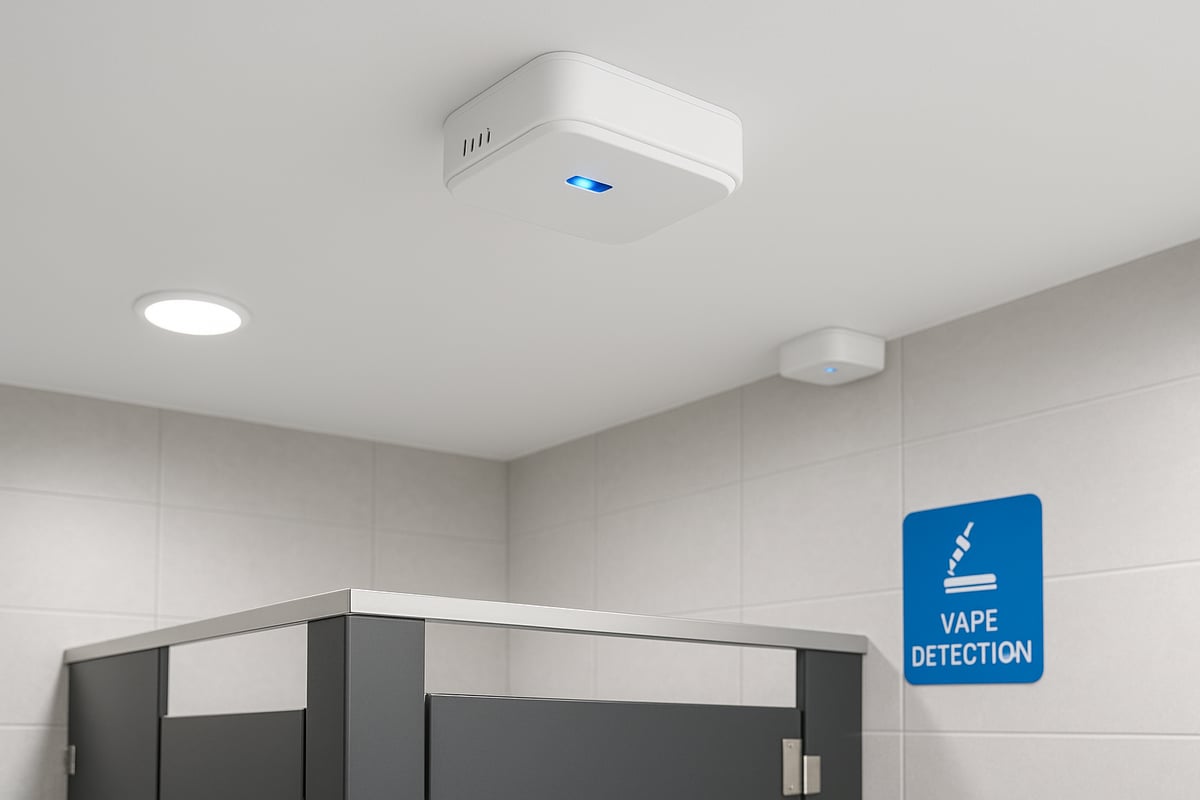
Sensor Types and Detection Methods
Vape detection for bathrooms relies on three core sensor types: particulate, chemical, and noise sensors. Particulate sensors identify the fine aerosols produced by e-cigarettes, while chemical sensors detect vapour compounds such as nicotine or propylene glycol. Noise sensors can pick up the distinct sounds of vaping devices activating.
Traditional smoke detectors often fail to detect vapour due to the smaller particle size. In contrast, advanced AI-powered sensors analyse air samples in real time, distinguishing vape aerosols from other substances like deodorant sprays or steam. This ensures vape detection for bathrooms is both precise and reliable.
Sensitivity and accuracy rates are critical. High-end sensors can detect even brief vaping events, minimising false alarms. Many systems now combine multiple sensor types within a single device, enabling multi-substance detection and integration with air quality monitoring.
| Sensor Type | Detects | Typical Use | AI Capable |
|---|---|---|---|
| Particulate | Fine aerosols | Vape, smoke | Yes |
| Chemical | Vapour compounds | Vape, gases | Yes |
| Noise | Device activation | Vape, general noise | Yes |
This combination of sensor technologies makes vape detection for bathrooms highly adaptable to varied environments.
Real-Time Alerts and Data Analytics
Modern vape detection for bathrooms offers instant notifications through a range of channels. Facility managers and safeguarding teams can receive alerts via dedicated apps, email, or audible alarms. This rapid response capability is essential for timely intervention and minimising disruption.
Advanced systems do more than just send alerts. They log every incident, capturing time, location, and sensor data for compliance reporting and analysis. Administrators can access dashboards that visualise trends, enabling evidence-based policy adjustments.
Data analytics play a crucial role. By reviewing incident patterns, schools and businesses can identify hotspots and adjust resources accordingly. Many users have reported a significant reduction in vaping incidents after installing these systems. For an in-depth look at the underlying technology, see Vape detection technology explained.
The ability to track and analyse data ensures vape detection for bathrooms not only catches incidents but also supports long-term prevention strategies.
Installation and Connectivity Options
When considering vape detection for bathrooms, institutions can choose between wired and wireless systems. Wired installations provide reliable power and connectivity, making them suitable for new builds or major refurbishments. Wireless options, on the other hand, offer flexibility and are ideal for retrofitting existing spaces.
Most modern detectors are compatible with standard building infrastructure. They connect via Wi-Fi, Ethernet, or proprietary networks, ensuring seamless integration with facility management systems. Power can be supplied through mains electricity or long-life batteries, supporting continuous operation.
Installation is typically straightforward. Sensors are discreetly mounted on ceilings or walls, out of direct sightlines for privacy compliance. Maintenance requirements are minimal, often limited to periodic cleaning and software updates.
| System Type | Power Source | Connectivity | Installation Time | Recommended Use |
|---|---|---|---|---|
| Wired | Mains | Ethernet/Wi-Fi | Longer | New builds, offices |
| Wireless | Battery/mains | Wi-Fi | Short | Schools, retrofits |
Choosing the right setup ensures vape detection for bathrooms is effective, scalable, and easy to manage.
Vape Guardian: Advanced Vape Detection Solutions
Vape Guardian stands as a leading provider of vape detection for bathrooms and air quality monitoring across the UK and internationally. Their systems feature high-accuracy sensors, real-time alerts, and AI-powered analytics that distinguish vaping from other aerosols.
Vape Guardian’s solutions offer multi-substance detection, dedicated support, and seamless integration with existing infrastructure. Evidence from clients shows up to a 94 percent reduction in vaping incidents within five weeks of installation.
Adoption is risk-free. Schools and businesses can access a free trial, a 100-day money-back guarantee, and tailored support throughout the process. This commitment to innovation and customer service makes Vape Guardian a top choice for vape detection for bathrooms.
Step-by-Step Guide to Implementing Vape Detection in Bathrooms
Implementing vape detection for bathrooms requires a systematic approach to ensure effective prevention and compliance. Follow this step-by-step guide to achieve robust results in your facility.
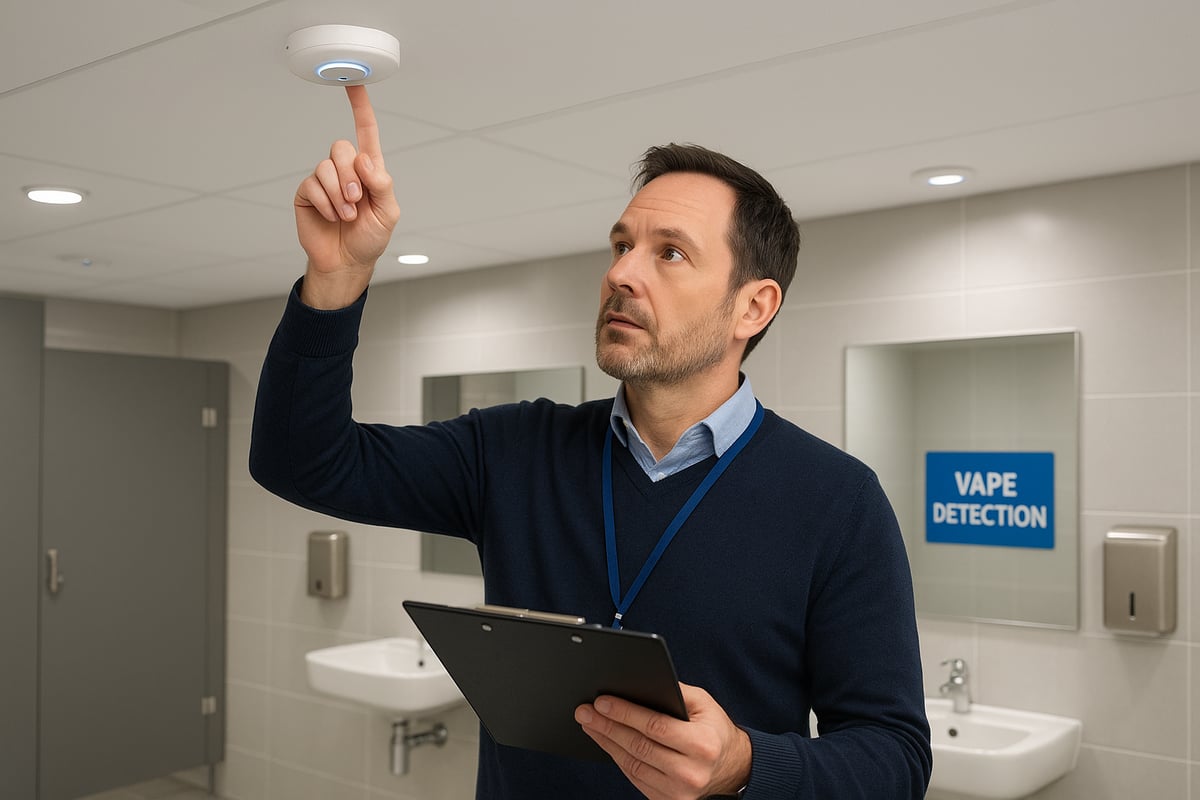
Assessing the Need and Setting Objectives
Begin by evaluating the scale and urgency of vape detection for bathrooms within your premises. Look for signs such as unusual odours, lingering vapour, or reports of vaping incidents from staff or students.
Conduct a walkthrough of all bathroom areas and identify hotspots where vaping is more likely to occur. Consider times of day, privacy levels, and previous complaints.
Set clear objectives. Are you aiming to reduce incidents, improve air quality, or meet safeguarding obligations? Establish measurable goals to guide your vape detection for bathrooms project and to track progress over time.
Selecting the Right Detection System
Choosing the appropriate vape detection for bathrooms is critical for success. Assess the features of available systems, focusing on sensitivity, accuracy, and the ability to distinguish vaping from other aerosols.
Compare alert options, such as real time notifications to mobile devices or integration with building management platforms. Evaluate reporting capabilities for compliance and safeguarding audits.
Budget considerations are essential. Investigate the total cost of ownership, including installation, maintenance, and potential upgrades. For more detailed guidance on effectiveness and best practices, see Do vape detectors work in bathrooms.
Planning Installation and Integration
Proper installation is vital for vape detection for bathrooms to function optimally. Position sensors in areas with good airflow, away from vents or direct water sources, to maximise coverage while respecting user privacy.
Coordinate with IT, facilities, and safeguarding teams to ensure seamless integration with existing infrastructure. Clarify power requirements, network connectivity, and compatibility with other monitoring systems.
Create a detailed installation plan. Include timelines, responsible parties, and contingency steps for unforeseen challenges. This proactive approach ensures the vape detection for bathrooms setup is efficient and minimally disruptive.
Staff Training and Policy Updates
Effective vape detection for bathrooms depends on well informed staff and updated policies. Train personnel on how to interpret alerts, respond to incidents, and escalate issues when necessary.
Develop or revise internal policies to reflect new procedures. Clearly communicate expectations to all staff, students, and users of the facility, ensuring everyone understands the purpose and limits of monitoring.
Place clear signage in bathroom areas to notify users about vape detection for bathrooms. Transparent communication builds trust and supports compliance with privacy regulations.
Ongoing Monitoring and Evaluation
Continuous monitoring is essential to maintain the effectiveness of vape detection for bathrooms. Regularly review incident data and system performance through analytics dashboards and compliance reports.
Schedule periodic maintenance checks to keep equipment in top condition. Use feedback from staff and users to refine detection strategies and address emerging challenges.
Adjust your approach as trends evolve. Stay informed about new vaping behaviours and detection technologies to ensure your vape detection for bathrooms remains reliable and future proof.
Legal and Privacy Considerations
The rapid adoption of vape detection for bathrooms brings important legal and privacy responsibilities. Institutions must ensure that detection systems comply with strict data protection laws and respect the rights of everyone using these spaces.
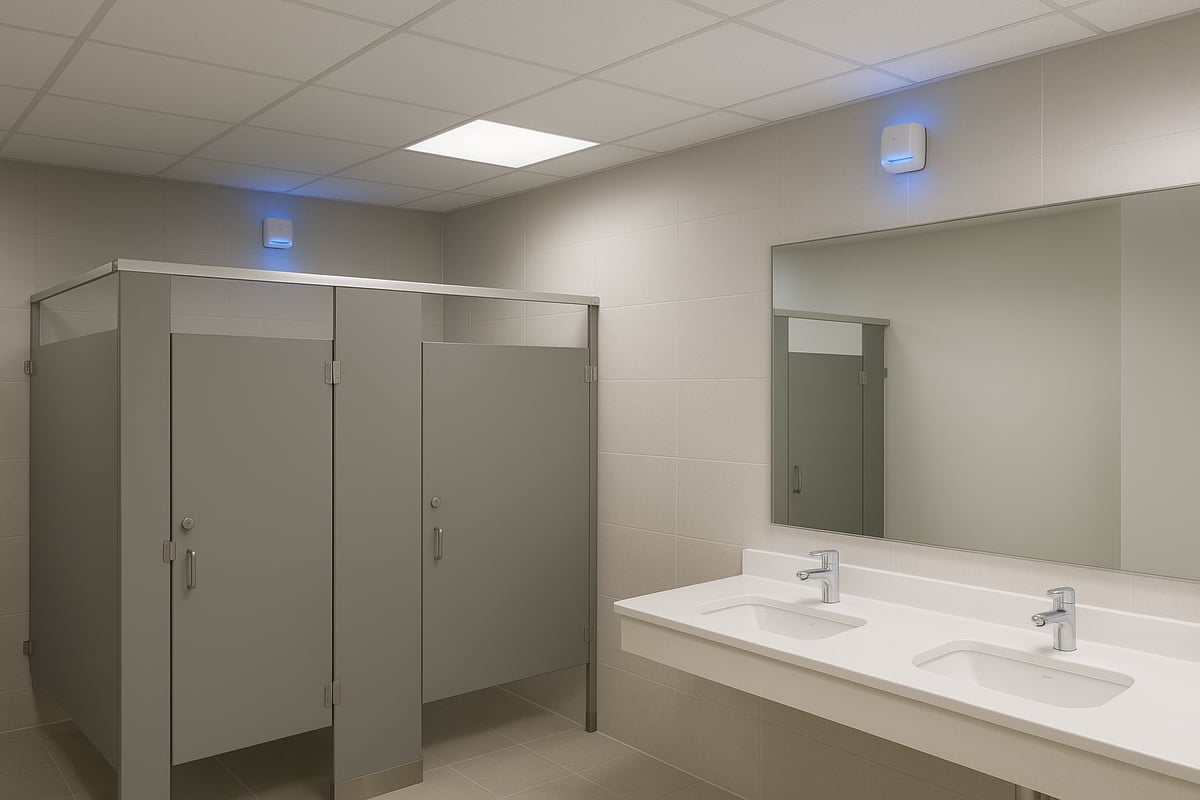
Data Protection and User Privacy
When deploying vape detection for bathrooms, data protection is a top priority. In the UK and across Europe, the General Data Protection Regulation (GDPR) sets clear standards for collecting and processing any personal information. Vape detection systems typically gather environmental data, such as air quality or chemical markers, and in some cases, may log incident times or device locations.
To maintain compliance, institutions should ensure that any data captured by vape detection for bathrooms remains anonymised and is never used to identify individuals directly. Privacy by design is essential, meaning that systems must be configured to avoid capturing audio or video and only monitor environmental factors relevant to vaping. Access to incident logs should be restricted to authorised staff and stored securely.
Regular reviews of data handling processes help reduce risks and demonstrate a commitment to privacy. Clear privacy notices should be displayed, informing users about the presence and purpose of vape detection for bathrooms in these areas.
Compliance with Local and National Regulations
Adhering to legal frameworks is crucial for institutions using vape detection for bathrooms. UK law, including the Regulation of Investigatory Powers Act (RIPA) and the Protection of Freedoms Act, sets boundaries on surveillance and monitoring in public and semi-public spaces. Schools and workplaces must ensure that vape detection for bathrooms does not infringe on privacy rights and follows both national and local guidelines.
For education settings, additional requirements may apply. Schools must balance safeguarding responsibilities with the right to privacy for students and staff. Consulting resources like Vape detectors for education settings can help institutions understand legal expectations and best practices. Documenting risk assessments, gaining appropriate approvals, and providing transparency are vital steps for compliance.
Workplaces should refer to Health and Safety Executive (HSE) guidance and consider any sector-specific regulations. Keeping up to date with evolving legal standards ensures that vape detection for bathrooms remains compliant and effective.
Best Practices for Ethical Implementation
Implementing vape detection for bathrooms ethically means prioritising trust, transparency, and respect for all users. Institutions should communicate openly about the presence of detection systems and their purpose. This can be achieved through clear signage at bathroom entrances and written policy updates.
Sample best practices include:
- Displaying notices that explain vape detection for bathrooms and how data is handled.
- Including privacy statements in employee or student handbooks.
- Providing contact details for privacy queries or concerns.
Reviewing policies regularly and seeking feedback from users fosters a culture of accountability. Institutions should ensure that staff understand protocols for responding to alerts and that all actions align with safeguarding and privacy obligations. By following these steps, organisations demonstrate integrity in their approach to vape detection for bathrooms.
Future Trends and Innovations in Vape Detection
The landscape of vape detection for bathrooms is evolving rapidly, driven by technological breakthroughs and shifting societal priorities. To stay ahead, institutions must understand the innovations shaping the future of detection, integration, compliance, and application.
AI and Machine Learning Advancements
Artificial intelligence is transforming vape detection for bathrooms by improving accuracy and reducing false positives. Newer sensors use machine learning to analyse air composition in real time, distinguishing vaping aerosols from everyday humidity or cleaning sprays.
Systems now adapt to each environment, learning normal air patterns and flagging only genuine vaping incidents. These AI-powered devices also update their algorithms remotely, ensuring they remain effective as new vaping products emerge.
For facility managers, this means less time spent investigating unnecessary alerts and more confidence in the reliability of their vape detection for bathrooms solutions.
Integration with Building Management Systems
Smart building technology is reshaping how vape detection for bathrooms fits into daily operations. Detection systems now interface with centralised building management platforms, allowing real time monitoring alongside security, fire safety, and air quality controls.
Administrators can view vape alerts on a single dashboard, automate incident responses, and generate compliance reports with ease. This integration reduces manual workload, speeds up response times, and supports a holistic approach to facility safety.
As smart infrastructure becomes standard, vape detection for bathrooms will play a crucial role in comprehensive digital building management.
Evolving Regulatory Landscape
Vape detection for bathrooms must keep pace with changing legal requirements. In the UK and EU, new regulations are being considered to address vaping in schools, workplaces, and public spaces. These rules may tighten air quality standards, mandate detection in high risk areas, or introduce stricter penalties for violations.
Staying informed about policy shifts is essential. Resources such as the ASH 2025 report on adult e-cigarette use provide valuable insight into vaping behaviours and anticipated legislative trends. Forward thinking institutions should invest in detection systems that are adaptable and upgradeable, ensuring long term compliance.
New Use Cases and Environments
Innovations in vape detection for bathrooms are unlocking new applications beyond education and offices. Retail centres, healthcare facilities, gyms, and leisure venues are increasingly adopting detection systems to address rising vaping rates among diverse populations.
Case studies reveal that demographic shifts, as outlined in the vaping demographics in the UK 2023–2025, are prompting tailored detection strategies for different age groups and environments. Portable and wireless sensors offer flexibility for temporary installations or multi site monitoring.
This expansion shows that vape detection for bathrooms is set to become a standard feature in safeguarding and facility management everywhere.
FAQs: Vape Detection in Bathrooms
Vape detection for bathrooms is an evolving field, and many organisations have questions about how these systems work, their effectiveness, and their impact on privacy and daily operations. Here are the answers to the most frequently asked questions.
What are the most common concerns about vape detection for bathrooms?
Common concerns include privacy, reliability, and how the system distinguishes vaping from other bathroom activities. Vape detection for bathrooms uses sensors that monitor air quality, not video or audio, so privacy is protected. Most modern systems are designed to minimise false alarms and only alert when vape aerosols are detected.
How reliable are vape detection systems, and what about false alarms?
Vape detection for bathrooms relies on advanced sensors and AI algorithms to reduce false positives. While some environmental factors can occasionally trigger alerts, regular calibration and maintenance keep accuracy high. For practical steps on responding to alerts and minimising disruption, see Best practice for handling vaping alerts.
What are the installation requirements and ongoing costs?
Most vape detection for bathrooms solutions offer flexible installation options, including wireless and wired systems. Installation typically involves ceiling or wall mounting and connecting to a network. Ongoing costs depend on system complexity, maintenance, and software subscriptions, but many providers offer scalable packages for different facility sizes.
How do these systems help with safeguarding and compliance?
Vape detection for bathrooms supports safeguarding by alerting staff to prohibited activity, allowing for timely intervention. Incident logs and analytics also help demonstrate compliance with school or workplace policies, as well as health and safety regulations. For more on vaping’s impact and regulatory context, review the Nicotine vaping in England: 2022 evidence update summary.
How do I choose the right solution and where can I find support?
When selecting vape detection for bathrooms, consider detection accuracy, alert options, reporting tools, and supplier support. Look for providers offering free trials, dedicated support, and resources for staff training. Troubleshooting guides and best practice advice are often available from reputable vendors to help you get started and maintain effective detection.
As we've explored, vaping in bathrooms poses real challenges for schools, offices, and public venues, from safeguarding concerns to increased maintenance. With technology evolving rapidly, staying ahead means understanding both the risks and the solutions. If you're ready to take practical steps to protect your facility and ensure a safer environment, you don't have to do it alone. You can reach out for expert guidance and tailored solutions—simply talk to our team and protect your building today. We're here to support you every step of the way.

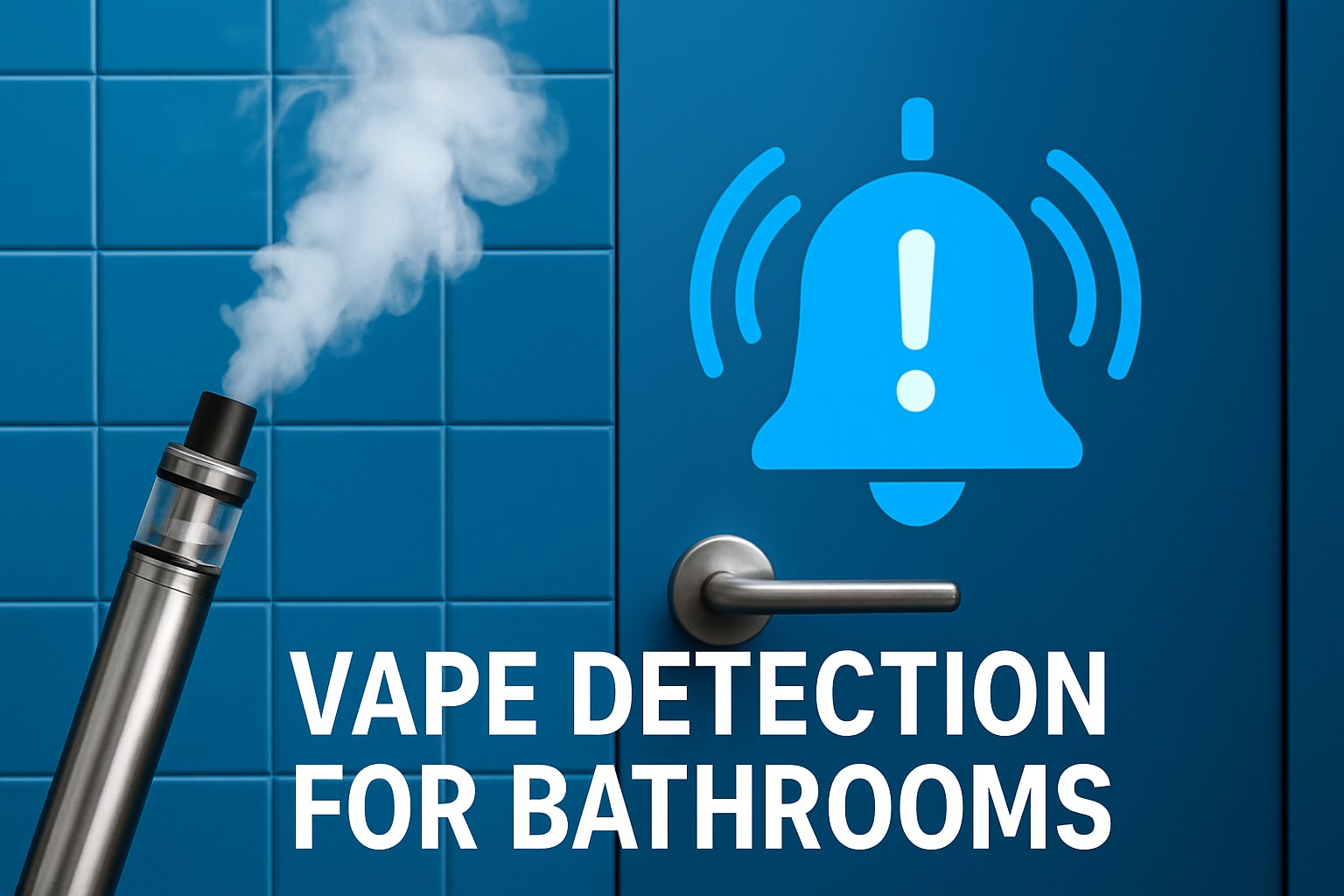
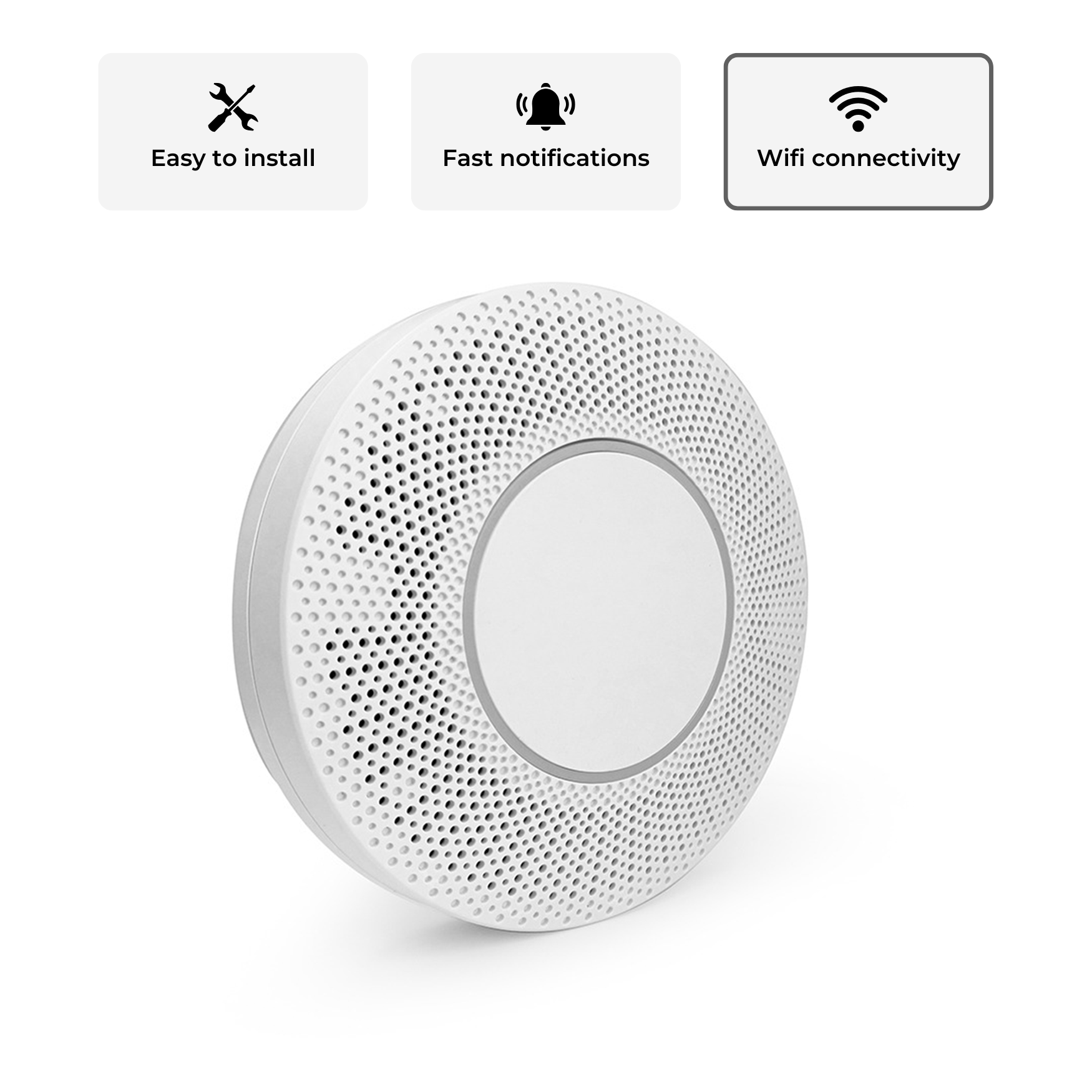
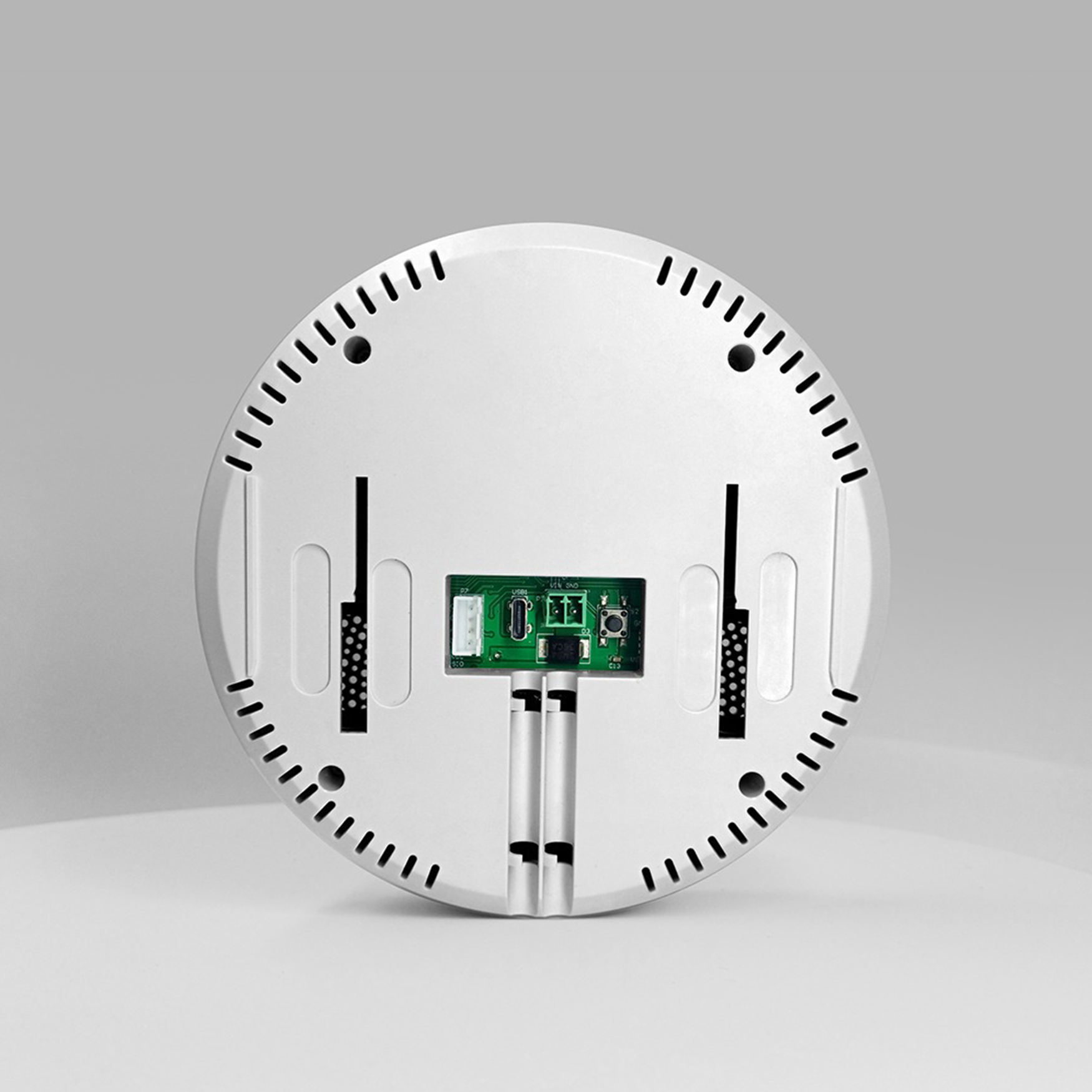
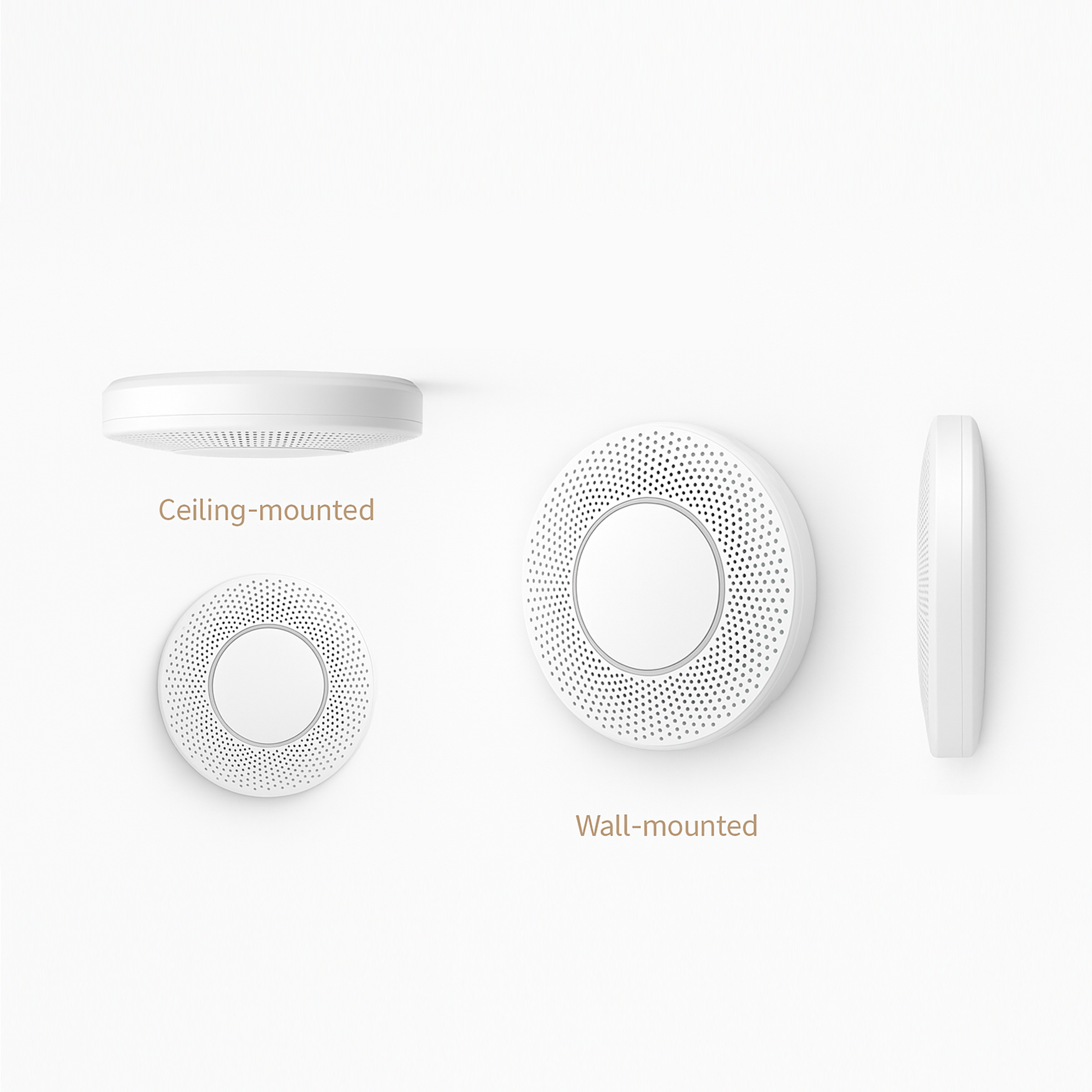
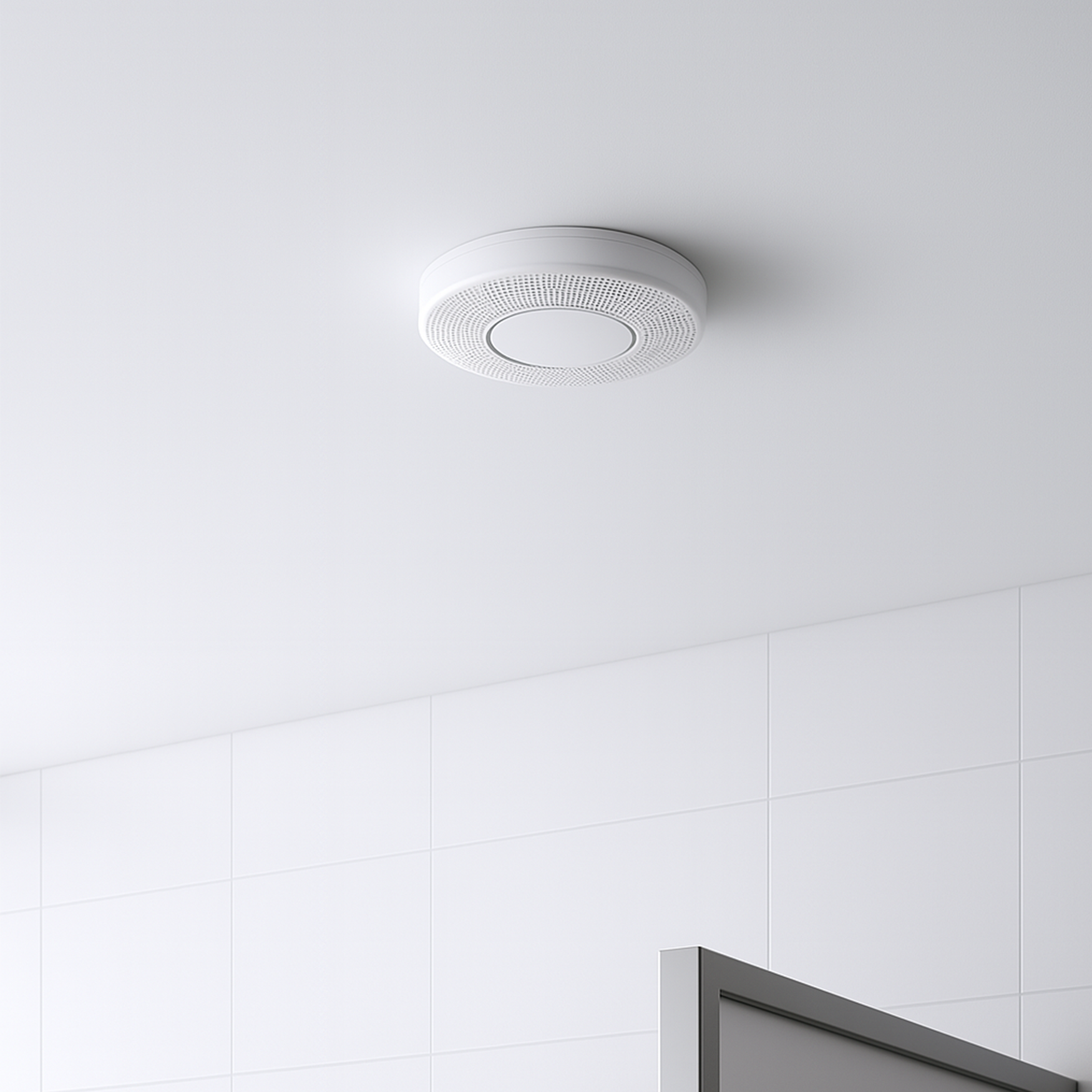
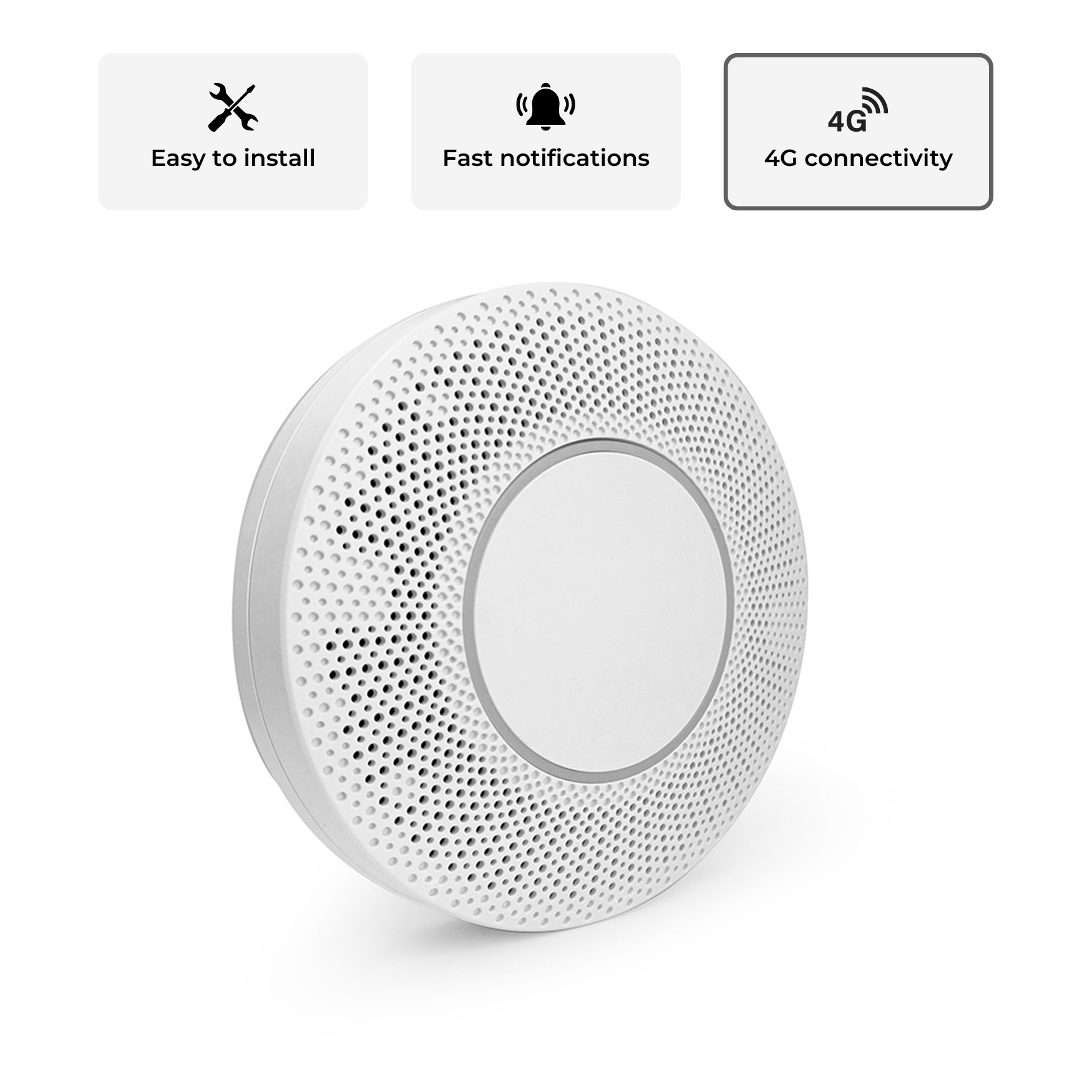
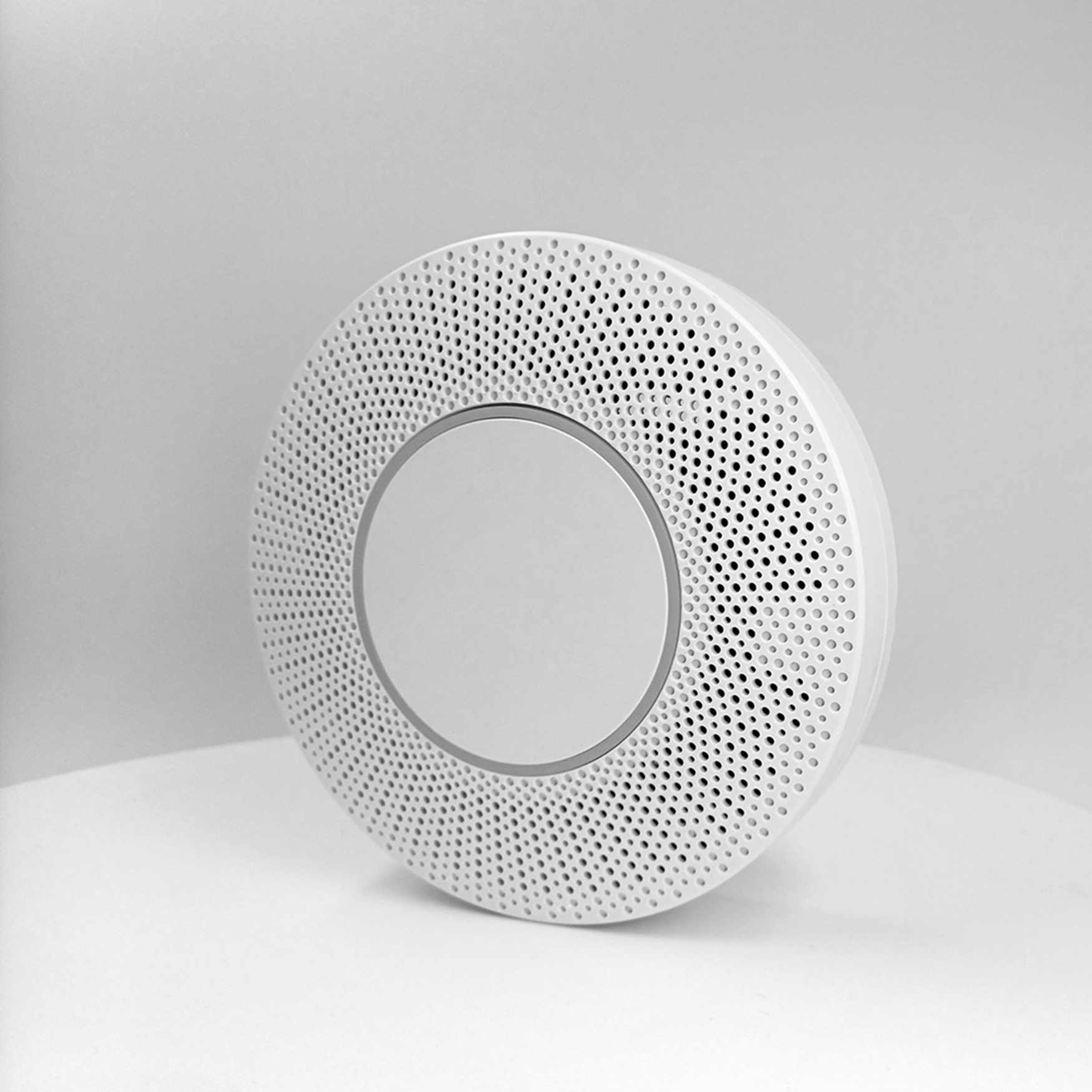
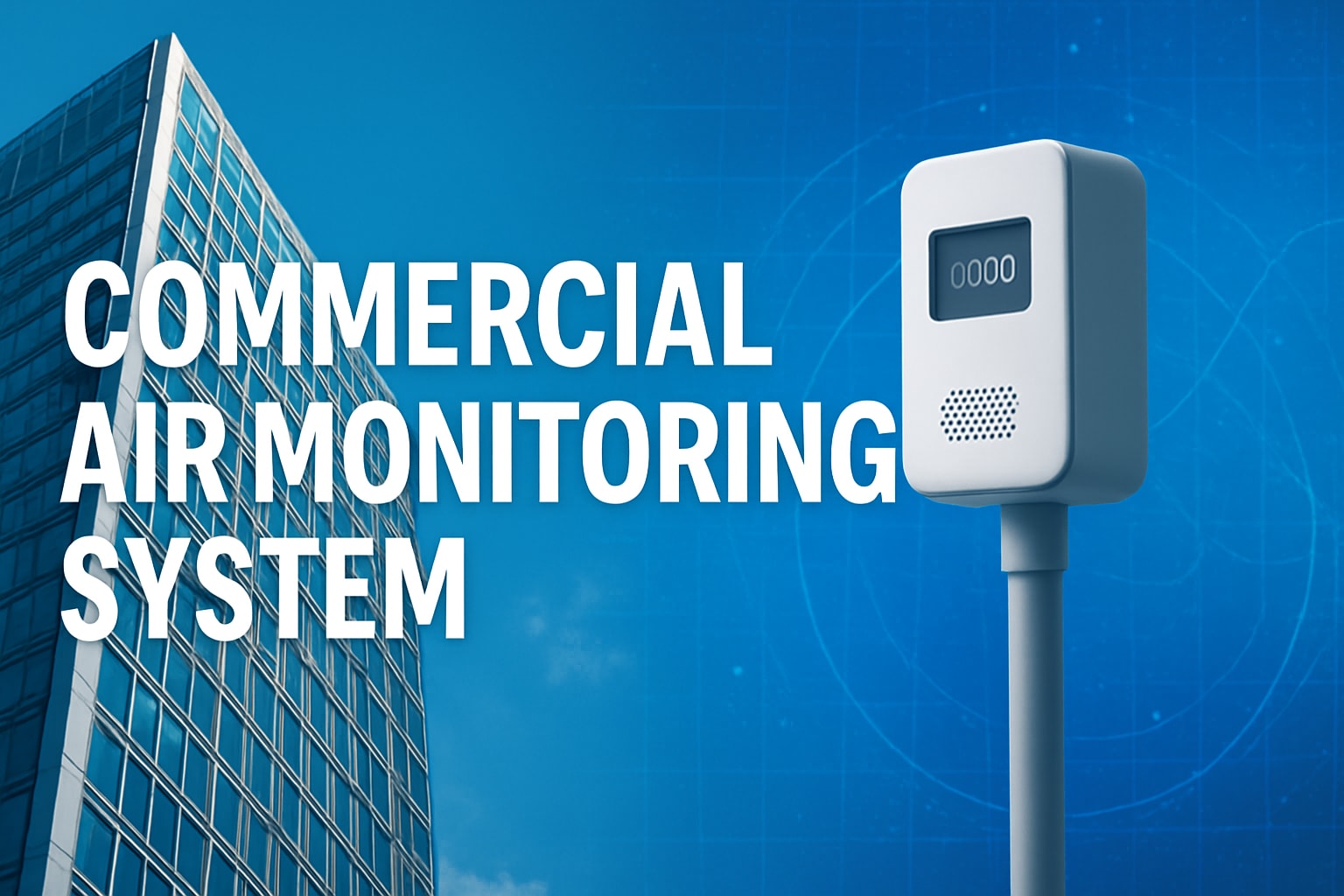

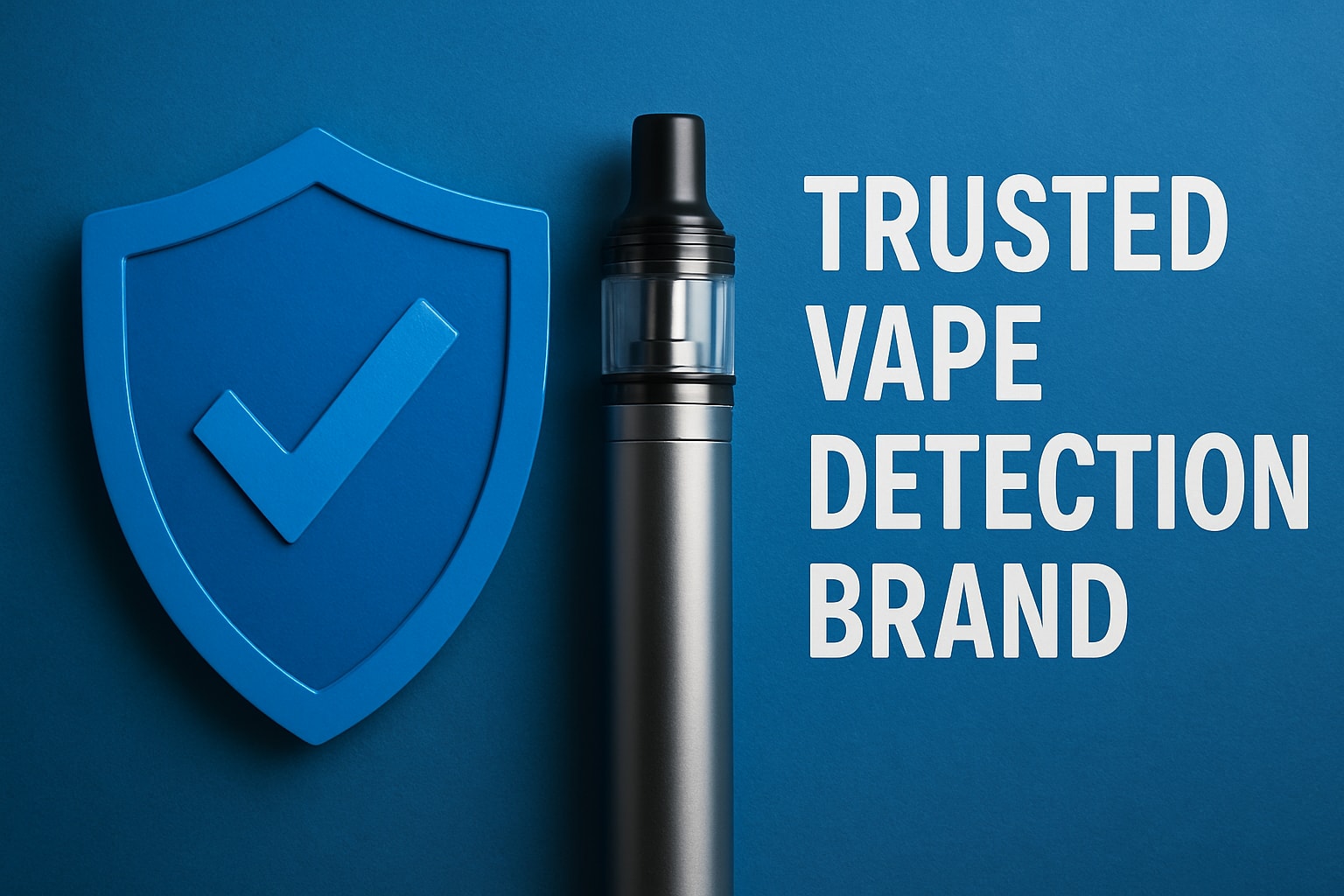
Share:
The Essential Vape Detection Technology Guide for 2025
The Essential Guide to PM25 Air Quality Reports (2025)